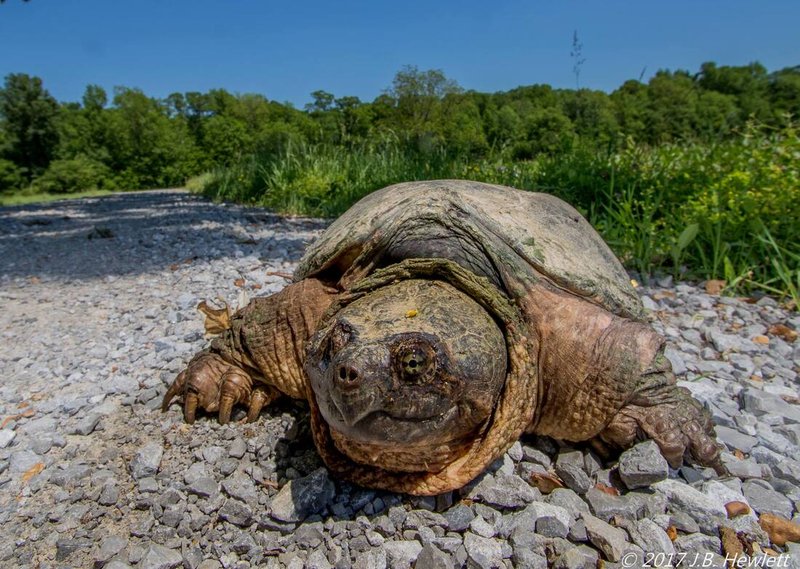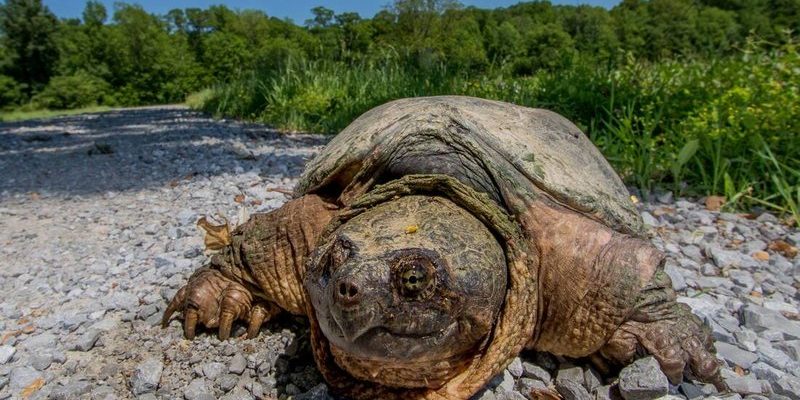
You might be wondering, “What exactly makes snapping turtles so special?” Well, they’re surprisingly adaptable and have some unique habits that help them thrive in various environments. From being opportunistic eaters to serving as a food source for other animals, snapping turtles are intriguing creatures that deserve our attention. Over coffee, I’d explain how their unique characteristics make them a vital piece of the ecological puzzle.
Understanding the Snapping Turtle’s Habitat
Snapping turtles are usually found in freshwater environments like rivers, lakes, and ponds. They prefer areas with soft, muddy bottoms where they can easily establish themselves. These habitats provide not just food but also safety for laying eggs. You see, snapping turtles are often lurking beneath the water’s surface, camouflaged by mud and muck, which gives them an edge when hunting for food.
The temperature of their habitat also plays a role in their survival. Though they’re quite adaptable, snapping turtles prefer warmer waters. In colder climates, they can hibernate at the bottom of a lake or pond until spring rolls around. This ability to cope with various environmental conditions is part of what has allowed them to thrive for so long.
On the flip side, their habitats can also be threatened by human activities. Pollution and habitat destruction can negatively impact their populations. Therefore, understanding where and how they live is crucial for their conservation.
The Snapping Turtle’s Diet and Role as a Predator
When it comes to food, snapping turtles are like the ultimate opportunists. They’re omnivores, which means they eat a little bit of everything. Their diet includes plants, fish, and even small mammals or birds. This variety isn’t just a quirk; it helps keep the ecosystem balanced.
By consuming dead and decaying matter, snapping turtles help recycle nutrients back into the environment. This is important because it keeps waterways clean and promotes healthy plant growth. So, when you see a snapping turtle munching on a fish, remember that it’s playing its part in maintaining the food web.
Interestingly, their predatory nature also means they face threats of their own. Larger animals, like alligators and even humans, might prey on snapping turtles. This balance of predator and prey makes the snapping turtle a fascinating part of the food chain.
Snapping Turtles and Their Role in Ecosystem Balance
You might be surprised to learn that snapping turtles contribute to not only their immediate surroundings but also to broader ecosystem health. Think of them as nature’s cleanup crew. As predators, they help regulate the populations of other species, ensuring that no one group becomes too dominant.
For instance, by keeping fish populations in check, snapping turtles help maintain healthy aquatic plant life. This balance is crucial. If fish populations exploded without any natural predators, certain plant species could become overwhelmed and die out, altering the ecosystem drastically.
Additionally, snapping turtles’ nesting behaviors also have ecological implications. When they lay their eggs, the nests provide a food source for other animals. Though many eggs don’t hatch due to predation, the few that survive contribute to the next generation of snapping turtles, creating a cycle of life that supports multiple species.
Reproductive Habits and Nesting Behavior
Each spring, female snapping turtles embark on a journey to find the perfect nesting site. They typically travel long distances, often crossing roads, which can be dangerous for them. Once they find a suitable spot—usually sandy or loose soil—they dig a hole and lay around 20 to 40 eggs.
The fascinating part? The temperature of the nest determines the sex of the hatchlings. Warmer temperatures tend to produce more females, while cooler ones create males. This unique trait highlights the importance of the environment in their reproductive success.
After laying their eggs, snapping turtles leave them to fend for themselves. The hatchlings are on their own from the moment they break free from the shell, diving into the water to start their lives. While many won’t survive due to predators, those that do will carry on the legacy of their species.
Common Threats to Snapping Turtles
Despite their tough shell and impressive adaptability, snapping turtles face several threats. Habitat loss is a significant issue. As wetlands are drained for development or agriculture, these turtles lose vital nesting and foraging grounds. Without proper habitats, their populations can decline rapidly.
Pollution poses another critical threat. Chemicals from agricultural runoff can contaminate the water turtles rely on, harming their health and, in some cases, their reproductive capabilities. It’s heartbreaking to think about, but pollution can drastically alter the water quality, making it challenging for them to thrive.
Moreover, road mortality is a significant concern, especially during nesting season. Many turtles are struck by vehicles as they cross roads to find nesting sites. Simple measures like wildlife crossings can make a difference, but it requires public awareness to implement solutions.
The Importance of Conservation Efforts
So, what can we do about these challenges? Conservation is key. Awareness is the first step. By educating the public about the importance of snapping turtles, we can help foster a sense of stewardship for these amazing creatures. Community cleanups, wetland restoration projects, and informed road construction can play significant roles.
Organizations dedicated to wildlife conservation are also working hard to protect snapping turtles and their habitats. By supporting such groups or participating in local initiatives, everyone can contribute to the well-being of these turtles.
Honestly, every small action counts. Whether it’s spreading the word about the importance of water quality or advocating for policies that protect wetlands, we can all help ensure that snapping turtles continue to thrive in their natural habitats.
Snapping turtles might seem intimidating, but they’re a vital part of our ecosystems. From their role as predators to their contributions to nutrient cycling and food webs, these fascinating creatures deserve our respect and protection.
As we navigate the challenges they face—from habitat loss to pollution—let’s remember to celebrate their unique contributions to the natural world. The next time you spot a snapping turtle, think of it as not just another turtle, but as a resilient survivor that plays a crucial role in keeping our ecosystems balanced. It’s pretty amazing, right? With a little effort, we can ensure that these remarkable turtles continue to thrive for generations to come.

